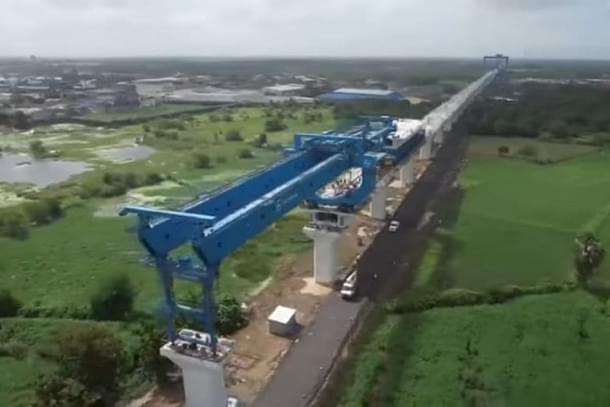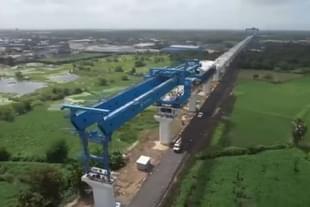News Brief
Four Sets Of Advanced Track Laying Machinery Arrives For Mumbai Ahmedabad Bullet Train Project
Swarajya News Staff
Sep 15, 2024, 08:02 AM | Updated 08:02 AM IST
Save & read from anywhere!
Bookmark stories for easy access on any device or the Swarajya app.


The National High Speed Rail Corporation Limited (NHSRCL) has announced substantial advancements in the Ahmedabad-Mumbai bullet train project.
Over 35,000 metric tonnes of rails have been received, along with four sets of cutting-edge track construction machinery. Track construction is now underway near Surat and Anand in Gujarat, marking a pivotal moment in the project's development.
The 508 km high-speed rail corridor will feature the J-Slab track system, based on Japan's renowned Shinkansen technology. This marks the first implementation of such advanced rail infrastructure in India. The J-Slab system is known for its ability to deliver superior speed and stability, crucial elements for the success of high-speed rail operations.
Track installation is fully mechanised, utilising machinery designed and manufactured to exacting Japanese specifications. The process of flash-butt welding, an advanced technique for joining rail sections using high electrical current, has commenced. This technology is essential for creating 200-metre-long rail panels, which are being installed on the viaduct structure.
At the Track Construction Base (TCB), 25-metre-long, 60 kg JIS rails are being welded into larger sections using flash-butt welding machines (FBWM), ensuring durability and seamless operation.
Once operational, the Ahmedabad-Mumbai bullet train will reach speeds of up to 320 km/h, dramatically reducing travel time between the two cities from seven hours to approximately two hours. This project, part of India's broader rail infrastructure upgrade, is being implemented with Japanese technical and financial assistance, including a ₹1.1 trillion soft loan from the Japan International Cooperation Agency (JICA).
To meet the stringent requirements of the Shinkansen system, the NHSRCL has organised extensive training and certification programmes for Indian engineers, work leaders, and technicians. Japanese experts are working closely with Indian teams to supervise and guide the construction process, facilitating a valuable exchange of knowledge that is expected to elevate the standard of rail construction in India.
In addition to track construction, the NHSRCL is making progress on key structures along the corridor, including bridges, tunnels, and viaducts. The construction of elevated viaducts, which will carry the bullet train over challenging terrain and urban areas, is already underway.
With a targeted completion date of 2028, the Ahmedabad-Mumbai bullet train project is set to be India's first high-speed rail system. It is expected to significantly boost regional connectivity and promote economic growth along the corridor. This project may pave the way for additional high-speed rail corridors across the country, aligning with the government's vision to modernise India's rail network.
The successful implementation of this project will place India among the elite group of nations with high-speed rail systems, joining countries like Japan, France, and China.




